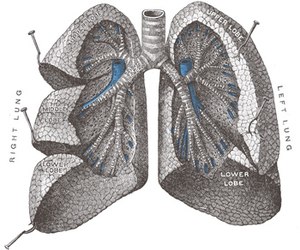Hypoxia was in the news recently after a small aircraft went down near Jamaica. After initialing radioing for permission to descend from 25,000 to 20,000 feet due to an indication of an issue, all communication was lost. NORAD tweeted that two F-15s were scrambled to the location and that hypoxia was suspected. The military pilots reported the windows were fogged and the pilot was slumped in his seat, though breathing. The plane continued to fly on autopilot until it crashed north of Jamaica.
Hypoxic conditions can set in as low as 8-10,000 feet, but the symptoms often can go unnoticed until it is too late to react. Military pilots, and more and more civilian pilots, undergo hypoxia training using the Reduced Oxygen Training Device with the hope that these early signs are recognized sooner so corrective actions (descent to 15,000 and taking in supplemental oxygen) can be taken. Check out these past posts (here, here and here), to learn more about the effect that hypoxia has on both military and civilian pilots flying at altitude.
But what causes hypoxia at altitude? Here’s a quick look at the science behind hypoxia.
Environment at Altitude – Pressure
Earth’s atmosphere encompasses us with a gaseous envelope which rotates with the planet. Commonly, it is said that as you go higher in altitude about the ground, the air is “thin.” This implies that there is a change in the composition of the air at altitude, which is not true. The total blend of gaseous components (predominately nitrogen (78%) and oxygen (21%) remains the same. What changes is the number of oxygen molecules per unit volume of air. Why? Because this is directly affected by pressure, which decreases as you go up in altitude. So, while the same percent of oxygen is in the air, the actual value is highly lower. A simple analogy would be that on the ground 21% oxygen is like 21 red marbles in a cup of blue marbles while at altitude, it is 21 red marbles in a bathtub full of blue marbles.
In addition to the change in pressure, the lower temperature at altitude affects the gases. This effect is not as substantial as that of pressure, but is still important. The heat comes primarily from the heat of the Earth, not the sun. So, the higher up, the cooler it becomes (approximately 2°C for every additional thousand feet of altitude).
Science 101 – Gas Laws
A quick refresher of the main gas laws that will come into play.
Dalton’s Law – With constant temperature and pressure, the sum of the component gas pressures in a gas mixture will be equal to the total pressure of the mixture. So, for our situation, since the percentage of oxygen in the atmosphere is 21%, we can calculate the partial pressure of oxygen at any altitude. This is key since the partial pressure of oxygen available plays a critical role in determining the onset and severity of hypoxia.
Graham’s Law – A gas at high pressure exerts a force on a region of lower pressure. This can be simplified if you think of it as an attempt to reach an equilibrium. If there is a permeable or semi-permeable membrane between two gases, and gas will move from the area of higher pressure to the area of lower pressure until equilibrium is reached. All gases act this way and they do so independently in part of a gas mixture. It’s possible (and actually probably) to gases in a mixture moving in opposite directions across the same membrane. In terms of the human body, this occurs to transfer oxygen in cells and tissues.
The Human Body at Altitude
What does all of that mean in terms of an actual human in a plane at altitude? Good question!
At sea level, the air that we breathe is at a pressure of 760 mm Hg, with the partial pressure of oxygen being 160 mm Hg (think of Dalton’s Law, 21% of 760 mm Hg). By the time the oxygen gets to the lung, we are down to about 14% (106.4 mm Hg) oxygen and an increase concentration of carbon dioxide at a pressure of 41.8 mm Hg. After sending the oxygen rich blood out to the rest of the body, the returning blood carries oxygen at only 40 mm Hg. As we determined from Graham’s Law, the oxygen will move from the higher pressure in the lung into the blood, where it is low while the carbon dioxide will move in the opposite direction. This cycle (breath in oxygen rich air, oxygen in the lung moves into the oxygen depleted blood, carbon dioxide moves out of blood, breathe out carbon dioxide rich air) continues with each breath.
And at altitude?
Well, at sea level, the pressure differences that allow the transfer of oxygen are sufficient to cause the blood leaving the lungs to be almost totally (97%) saturated with oxygen. Move up to the top of Pike’s Peak (about 14,500 feet) the oxygen saturation drops with the pressure to about 80% and symptoms of altitude sickness appear with any prolonged exposure. At 25,000 feet, the partial pressure of oxygen in the lung is 14% of 281.8 mm Hg or 39.5 mm Hg. This is LOWER than the pressure of oxygen in the blood returning to the lung. The transfer of oxygen is therefore interrupted, and a body in this circumstance will quickly lose consciousness. In between these two altitudes, symptoms from mild vision issues to serious disorientation are seen.



